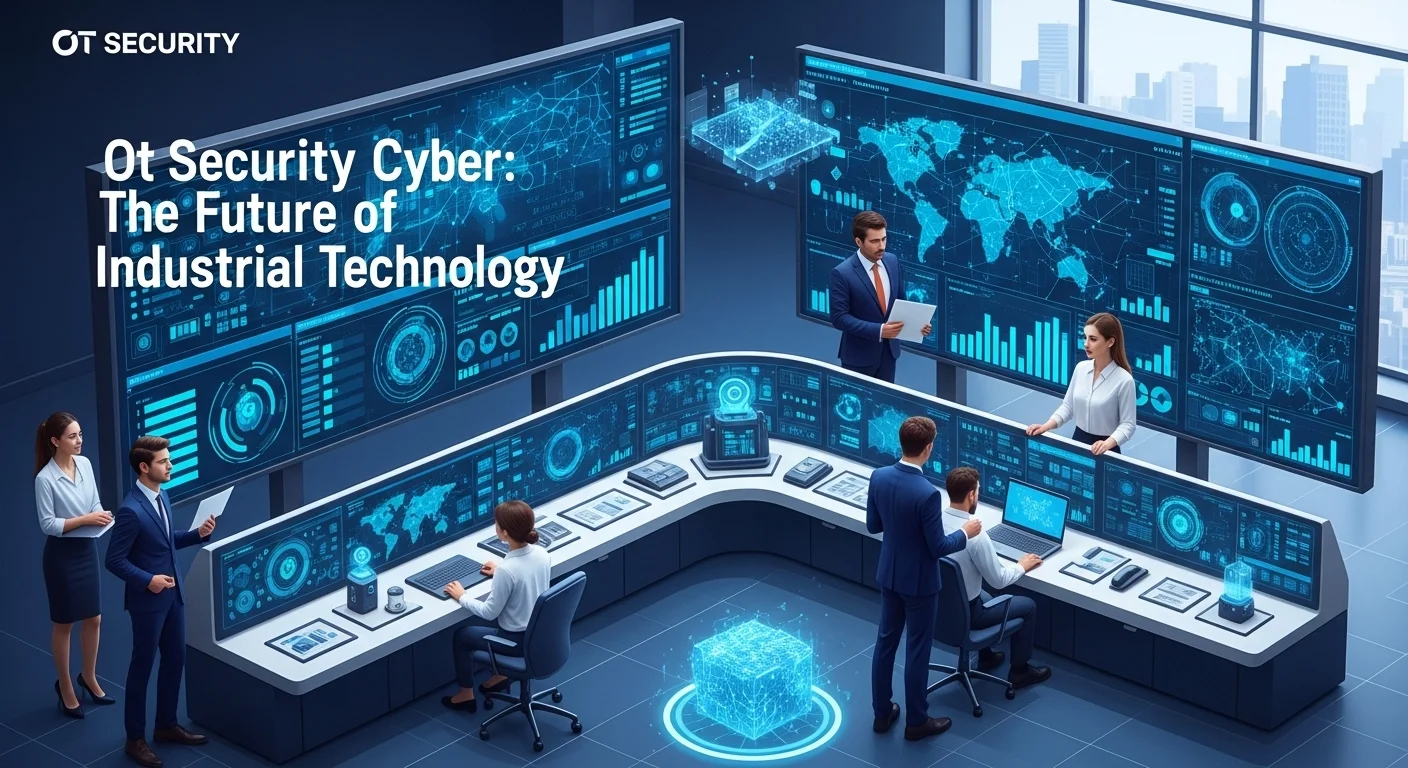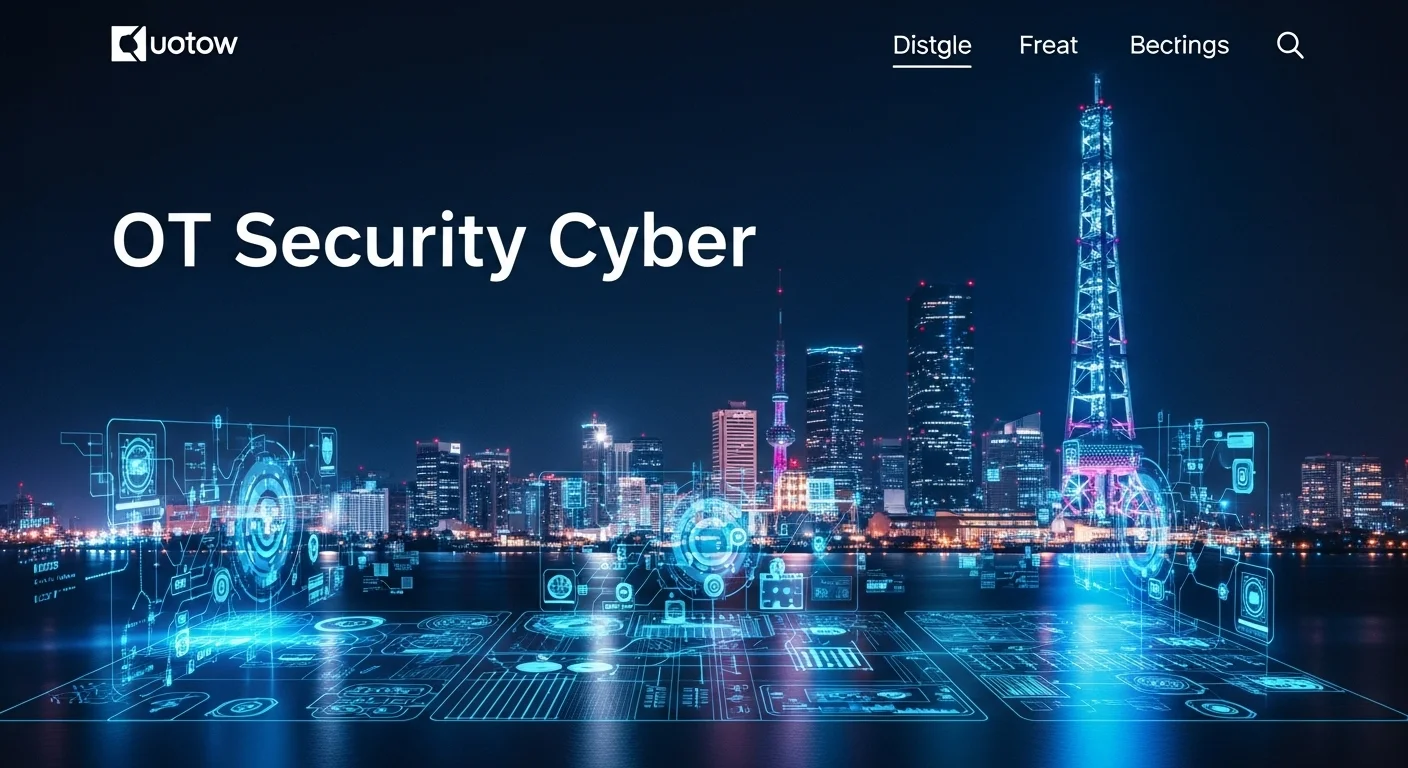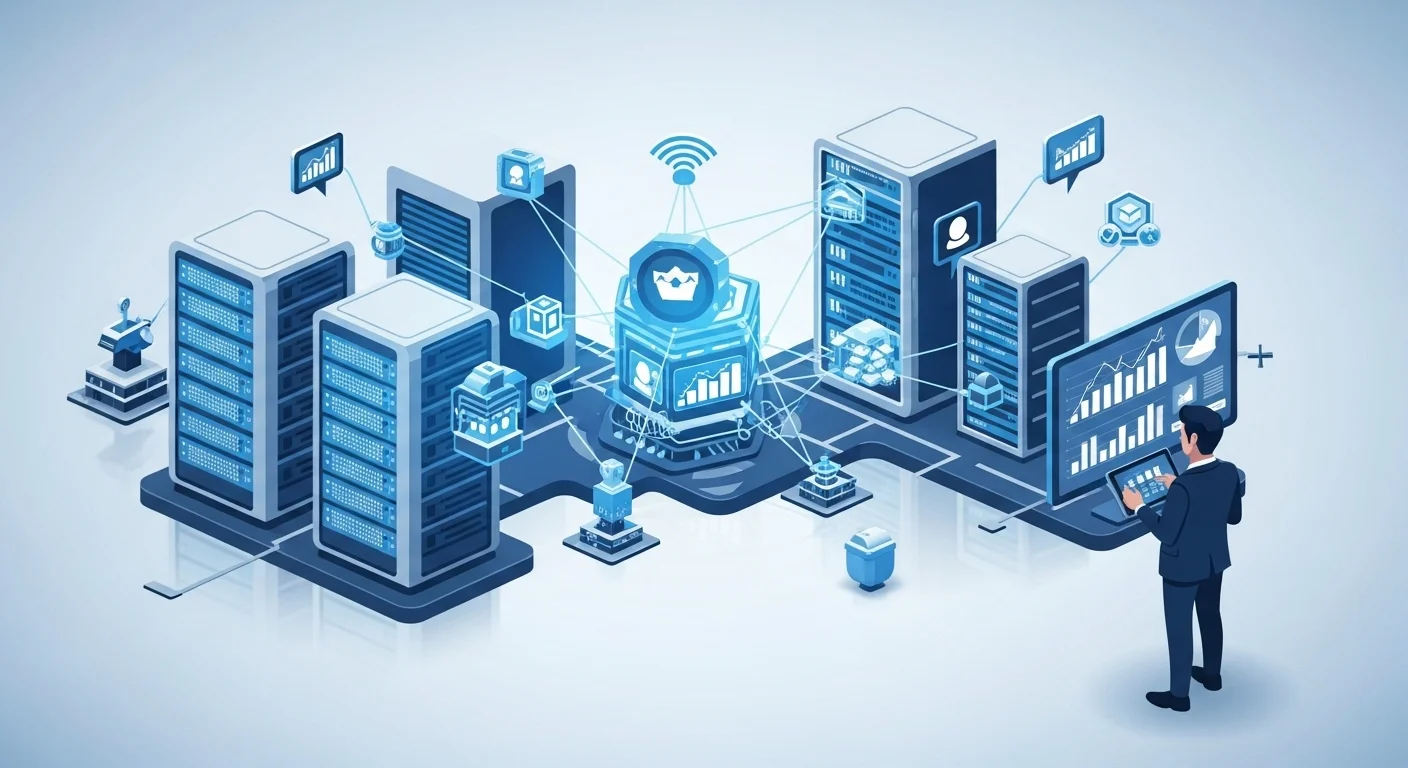Ot Security Cyber: The Future of Industrial Technology

Executive Summary
In an era of unprecedented technological connectivity, the line between the digital and physical worlds is blurring, especially in industrial sectors. This article delves into the critical domain of Ot Security Cyber, or Operational Technology Cybersecurity. It explores the unique challenges and solutions required to protect the machinery and processes that form the backbone of our modern infrastructure, from manufacturing plants to power grids. We will differentiate between traditional IT security and the specialized needs of OT environments, where the priorities shift to safety and availability. This piece serves as a comprehensive guide for business leaders and technology enthusiasts, covering the importance of a robust ot cyber security strategy, the implications of IT-OT convergence, and the frameworks necessary to build resilient ot systems cyber security. Understanding and implementing strong cyber security ot practices is no longer optional; it is a fundamental requirement for operational continuity, safety, and business integrity in the age of Industry 4.0.
Table of Contents
What is Ot Security Cyber and why is it important in Technology?
The digital transformation has revolutionized industries, connecting previously isolated machinery to corporate networks and the internet. This convergence, while unlocking immense efficiency and innovation, has exposed a new and critical attack surface: Operational Technology (OT). Ot Security Cyber is the specialized practice of defending these industrial environments from digital threats. Unlike Information Technology (IT), which focuses on protecting data, OT pertains to the hardware and software that directly monitors and controls physical devices, processes, and events. Think of the industrial control systems (ICS), supervisory control and data acquisition (SCADA) systems, and programmable logic controllers (PLCs) that run everything from power grids and water treatment facilities to factory assembly lines and transportation networks. The stakes in this domain are incredibly high; a cyberattack on an OT system can cause physical destruction, halt production, create environmental disasters, and even endanger human lives. Therefore, the importance of ot cyber security in the broader field of technology cannot be overstated.
Historically, OT systems were isolated, or 'air-gapped,' from IT networks, relying on physical security for protection. However, the drive for data-driven decision-making, predictive maintenance, and remote operations has dismantled these barriers. This integration is known as it ot cyber security convergence. While beneficial for business intelligence, it means that threats that once targeted office networks can now potentially traverse into the industrial environment, with devastating consequences. The infamous Colonial Pipeline ransomware attack is a prime example, where an IT breach forced the shutdown of a major fuel pipeline, demonstrating the real-world impact of neglecting the unique requirements of cyber security ot. This incident highlighted that traditional IT security measures are often insufficient or even detrimental in an OT context. IT security prioritizes the Confidentiality, Integrity, and Availability (CIA) of data. In contrast, ot in cyber security flips this priority to Availability and Safety first. An unexpected reboot of a server in an office is an inconvenience; an unexpected shutdown of a controller in a power plant is a catastrophe.
The unique nature of ot systems cyber security stems from several core challenges. Firstly, many OT environments rely on legacy systems with lifecycles measured in decades, not years. These systems were often designed before cybersecurity was a consideration and may run on outdated operating systems that cannot be easily patched or updated without risking operational downtime. Secondly, OT devices use specialized, proprietary communication protocols that are not understood by traditional IT security tools. Attempting to scan these sensitive devices with standard IT vulnerability scanners can cause them to crash, leading to production stoppages. Thirdly, the primary goal in an OT environment is to ensure constant availability and reliability. Maintenance windows are rare and carefully planned, making it difficult to implement security updates or take systems offline for remediation. This focus on uptime means that the approach to security must be fundamentally different, emphasizing passive monitoring, network segmentation, and non-intrusive detection methods.
Understanding the role of ot in cyber security is crucial for developing a holistic defense strategy for any modern enterprise. A security program that only covers the IT domain leaves the organization's most critical operational assets exposed. A breach could lead to significant financial losses from downtime, regulatory fines, and reputational damage. Moreover, for industries designated as critical infrastructure, a failure in ot cyber security can have national security implications. The increasing sophistication of state-sponsored threat actors and cybercriminals targeting industrial sectors means that a passive or reactive stance is no longer viable. Businesses must proactively invest in building a resilient security posture that bridges the gap between the IT and OT worlds. This requires not only specialized technology but also a cultural shift, fostering collaboration between IT professionals, who understand the digital threat landscape, and OT engineers, who understand the industrial processes and their unique constraints. The journey towards mature it ot cyber security involves creating a unified governance structure, conducting comprehensive risk assessments that cover both domains, and implementing controls that protect operations without impeding them. Ultimately, robust ot systems cyber security is a critical enabler of safe, reliable, and efficient industrial operations in an increasingly connected and dangerous digital world. It is the bedrock upon which the promise of Industry 4.0 and the Industrial Internet of Things (IIoT) can be safely built.

Complete guide to Ot Security Cyber in Technology and Business Solutions
A comprehensive approach to Ot Security Cyber requires a blend of robust technical methods, strategic business techniques, and the right resources. It moves beyond simply installing firewalls and antivirus software, demanding a nuanced understanding of the industrial landscape. The foundation of strong ot systems cyber security is visibility. You cannot protect what you cannot see. Therefore, the first step is to create a detailed asset inventory of all hardware and software components within the OT environment. This is often more challenging than in IT, as many OT devices are not designed to be easily discovered on a network. Specialized passive monitoring tools are essential for this task, as they can identify and classify assets by listening to network traffic without actively probing sensitive devices.
Technical Methods for Robust OT Cyber Security
Once visibility is established, network segmentation becomes the primary technical control. Based on a hierarchical model like the Purdue Enterprise Reference Architecture, segmentation involves dividing the network into smaller, isolated zones. This contains potential breaches within a single zone, preventing lateral movement of an attacker from the less secure IT network into the critical OT network, or between different production lines. A Demilitarized Zone (DMZ) is typically established between the IT and OT networks to act as a buffer, strictly controlling any traffic that passes between them. Within the OT network, micro-segmentation can further isolate critical control systems, ensuring that only authorized devices can communicate with them. This principle of creating defensive layers is a core tenet of the cyber security ot defense-in-depth strategy.
Access control is another critical technical pillar. The principle of 'least privilege' must be rigorously applied, ensuring that users and systems only have the access necessary to perform their functions. For remote access, which is increasingly necessary for maintenance and support, secure solutions like Zero Trust Network Access (ZTNA) are paramount. ZTNA operates on a 'never trust, always verify' model, requiring strict authentication for every access request, regardless of its origin. This is a significant departure from traditional VPNs, which often grant broad network access once a user is connected. Furthermore, implementing multi-factor authentication (MFA) for all access, especially for critical systems and remote connections, adds a vital layer of security.
Finally, continuous monitoring and threat detection are essential for a proactive defense. Since active scanning is often too risky in OT environments, passive Intrusion Detection Systems (IDS) designed for industrial protocols (e.g., Modbus, Profinet, DNP3) are used. These systems analyze network traffic for anomalies, known attack signatures, and policy violations without disrupting operations. When an incident is detected, a well-defined Incident Response (IR) plan, specifically tailored for OT, is crucial. The IR plan must prioritize the safe shutdown or isolation of affected processes and include procedures for recovery that minimize downtime, a key concern for any it ot cyber security program.
Business Techniques and Strategic Frameworks
From a business perspective, managing ot cyber security effectively requires a strategic approach grounded in established frameworks. The most widely recognized standards are the ISA/IEC 62443 series and the NIST Cybersecurity Framework (CSF). ISA/IEC 62443 is a comprehensive set of standards specifically designed for the security of Industrial Automation and Control Systems (IACS). It provides a structured approach for asset owners, system integrators, and product suppliers to manage cybersecurity throughout the system lifecycle, from design to decommissioning. The standard introduces the concept of Security Levels (SLs), allowing organizations to apply security measures commensurate with the identified risk.
The NIST Cybersecurity Framework, while not exclusively for OT, provides a flexible and adaptable structure for managing cyber risk across an organization. Its five core functions—Identify, Protect, Detect, Respond, Recover—offer a high-level, strategic view of cybersecurity activities that can be applied to both IT and OT environments. Many organizations use the NIST CSF as their overarching governance model and then apply the more specific controls from ISA/IEC 62443 to their ot systems cyber security program. Another invaluable resource is the MITRE ATT&CK for ICS framework. This knowledge base details the tactics and techniques used by adversaries in real-world attacks on industrial systems. Security teams can use it to simulate attack scenarios, test their defenses, and prioritize security controls against the most likely threats, a practice known as threat-informed defense.
The convergence of it ot cyber security necessitates strong governance and collaboration. Organizations must break down the traditional silos between IT and OT teams. This can be achieved by forming a cross-functional cybersecurity committee with representatives from both departments, as well as from operations, engineering, and physical security. This committee is responsible for developing a unified security policy, overseeing risk management activities, and ensuring that security initiatives are aligned with business objectives. Regular training and awareness programs are also vital to ensure that all personnel, from plant operators to IT staff, understand their roles and responsibilities in maintaining a secure environment. The human element is often the weakest link, and a well-informed workforce is a critical component of any defense strategy focusing on ot in cyber security. The ultimate goal is to embed security into the corporate culture, transforming it from a purely technical issue into a shared business responsibility.

Tips and strategies for Ot Security Cyber to improve your Technology experience
Improving your technology posture through effective Ot Security Cyber is not just about acquiring new tools; it's about implementing intelligent strategies and adopting best practices that create a resilient and secure industrial environment. A mature ot cyber security program is proactive, adaptive, and deeply integrated into the organization's operational fabric. Here are some advanced tips and strategies for businesses and technology leaders looking to elevate their security experience.
Adopt a Threat-Informed Defense with AI and Machine Learning
Move beyond a compliance-only mindset. While frameworks like NIST and ISA/IEC 62443 are essential for building a baseline, a truly effective strategy is risk-based and threat-informed. This means using resources like the MITRE ATT&CK for ICS framework to understand how adversaries target systems like yours. Conduct regular tabletop exercises and purple team assessments where your security teams (blue team) and ethical hackers (red team) work together to simulate real-world attack scenarios. This helps identify blind spots in your defenses and validates the effectiveness of your incident response plan in a controlled setting.
Furthermore, leverage the power of Artificial Intelligence (AI) and Machine Learning (ML). The future of cyber security ot lies in proactive and predictive capabilities. AI-driven security platforms can analyze vast amounts of data from network sensors and endpoints in real-time, establishing a baseline of normal operational behavior. When deviations from this baseline occur, the system can flag them as potential threats, often detecting novel or zero-day attacks that signature-based systems would miss. This allows security teams to investigate and neutralize threats before they can cause significant impact, a crucial advantage in high-availability environments. AI can also help combat alert fatigue by correlating thousands of low-level alerts into a single, high-fidelity incident, allowing analysts to focus on what truly matters.
Foster Deep IT-OT Collaboration and Governance
The cultural and organizational divide between Information Technology (IT) and Operational Technology (OT) teams is one of the biggest hurdles to effective it ot cyber security. IT professionals are experts in cybersecurity but may not understand the unique constraints and priorities of the plant floor. OT engineers have deep knowledge of industrial processes but may lack cybersecurity expertise. Bridging this gap is non-negotiable. Establish a formal governance model, such as a Cybersecurity Steering Committee, with executive sponsorship and representation from both departments. This group should be responsible for creating a unified security strategy, harmonizing policies, and resolving conflicts. Cross-training is also invaluable. Have IT security staff spend time on the plant floor to understand the operational impact of their decisions, and train OT engineers on cybersecurity fundamentals and threat awareness. This shared understanding fosters mutual respect and enables more effective collaboration when an incident occurs. A unified approach ensures that the ot in cyber security strategy is not seen as an IT project, but as a core business function.
Implement Robust Lifecycle Management and Supply Chain Security
The security of ot systems cyber security begins long before a device is installed on the network. It starts with the supply chain. When procuring new OT equipment, cybersecurity must be a key evaluation criterion. Insist that vendors adhere to secure development lifecycle standards, such as IEC 62443-4-1, which ensures that security is built into the product from the ground up, not bolted on as an afterthought. Request a Software Bill of Materials (SBOM) for new devices to understand all the third-party components and potential vulnerabilities they contain. This is crucial for effective vulnerability management throughout the device's long lifecycle.
Patch management in OT is notoriously difficult, but it cannot be ignored. Develop a risk-based patching strategy. Not all vulnerabilities are created equal. Prioritize patching for systems that are internet-facing or critical to safety and production. For systems that cannot be patched immediately, use compensating controls like virtual patching (using an Intrusion Prevention System to block exploits of the vulnerability) and network segmentation to isolate the vulnerable device until a maintenance window is available. This pragmatic approach to vulnerability management balances security requirements with the operational realities of the plant floor. As a quality external resource, organizations should consult the Cybersecurity and Infrastructure Security Agency's (CISA) page on Industrial Control Systems, which provides alerts, best practices, and resources. For example, a valuable starting point is their advisories page, which details vulnerabilities in specific OT products. A strong ot cyber security program considers the entire lifecycle, from procurement to decommissioning, ensuring that security is a constant, not an event.
Expert Reviews & Testimonials
Sarah Johnson, Business Owner ⭐⭐⭐
The information about Ot Security Cyber is correct but I think they could add more practical examples for business owners like us.
Mike Chen, IT Consultant ⭐⭐⭐⭐
Useful article about Ot Security Cyber. It helped me better understand the topic, although some concepts could be explained more simply.
Emma Davis, Tech Expert ⭐⭐⭐⭐⭐
Excellent article! Very comprehensive on Ot Security Cyber. It helped me a lot for my specialization and I understood everything perfectly.



